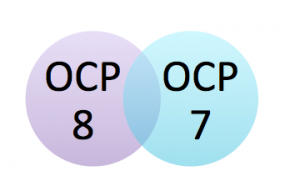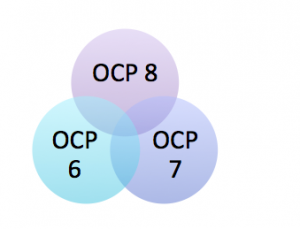I had upgraded my mother’s Chromebook to a 4g model late last year. I had known that operating system updates didn’t occur over 3g. Unsurprisingly, they don’t occur over 4g either. She’s been taking her laptop to wifi to patch and enjoying the 4g speeds for normal home internet use. Everyone happy. Until now. Her source of convenient wifi has vanished. Now, she could go to Starbucks or the library o use wifi. But that’s not convenient. I decided to look at replacing the monthly 4g bill with a monthly wifi hotspot bill.
The difference
On a prepaid low bandwidth plan, the two are pretty comparable.
| Category |
Verizon 4g |
ATT wifi hotspot (over 4g) |
| Where to find the price list |
Verizon page |
GoPhone page |
| Minimum plan per 30 days |
$20 |
$25 |
| Amount of bandwidth included |
1GB |
2GB |
| Ability to buy more if go over |
$5 for 300MB |
$10 for 500MB |
| Next level plan if not enough bandwidth |
$30 for 2GB plan |
$50 for 5GB |
In other words $5 more per month for double the bandwidth. And the Chromebook can see it as wifi so patches work.
Trying to buy the hotspot online
The AT&T Velocity hotspot is $149 if you want to use a prepaid plan. (Free with a contract.) I hit two problems trying to buyt it online:
- AT&T’s product page either doesn’t work in Safari or is relying on a third party site to render the ability to order the device. Or it’s just broken. I tried reloading the page four times to write this post and it showed up the fourth time. In any case, I switched to Chrome.
- When you choose the $149 version, AT&T asks if you are a new or existing customer. I clicked new customer. It then took me to a page to buy a “choice” of plan. The only “choice” was the $50/month plan.
I was able to find out online that while my local AT&T store didn’t have the device in stock, the one at the mall did.
Buying the hotspot in person
This went better. They didn’t try to trick me into buying the $50 plan. They warned me that I had to pay for the first month ($25) while still in the store. No problem. I had planned to buy the first month right away to test anyway.
The receipt was a bit odd. It said the $25 plan was for 1.5GB. Online it shows at 2GB when I check my use so this is just wrong. It also directs to att.com/wireless which isn’t the site to go to for prepaid.
Trying out the hotspot
When I got home, I gave it a shot. It was easy to use. The battery/case comes separated so I put that together. The hotspot is like a cell phone that doesn’t make calls.
The device tells you the charge, connection strength and whether you have any new messages. I had a few from AT&T about the product. It has a touch screen to get messages. Or you can use the website paygonline.com or att.com/mygophone to check them through a computer. You know you have a text because the device blinks with a green light.
The device also tells you how many connections are in use. I went into settings and lowered the max from 10 to 2 by going to http://attwifimanager once connected to the hotspot from the Chromebook. (One for my mother’s Chromebook and one for my iPad when I visit. Being able to use my iPad when I visit is a nice side effect of using a hotspot.) I got a message “The LCD display is in operation, use power button to turn LCD display off and try again” which was easy enough to move past.
I also changed the wifi name from ATT-WIFI-1234 to something more readable and changed the password to a different set of numbers than the default. It suggests using numbers and letters but then wouldn’t let me choose letters. Once I changed this, my browser hung on saving because it was no longer connected to the new wifi network. Not a big deal, but they could have given a prompt. Once I reconnected, I also disabled broadcasting the SSID.
Note: I had to turn broadcasting the SSID back on to avoid having to enter the password on each connect. Chrome feels it is bad that I’m not broadcasting the network name. I’m annoyed ChromeOS doesn’t work well with hidden SSIDs. I understand that hiding the SSID doesn’t protect it from the bad guys. But it does prevent random people from trying different passwords. But at the same time, I’m worried this isn’t a well supported configuration and my mom will have other troubles later.
Anyway, then I went to settings > advanced to change the admin login so it isn’t attadmin.
I also learned the bandwidth reporting is realtime which is an improvement over Verizon. And that if you don’t use it for hours, you have to press the power button on the hotspot so the wifi network resumes broadcasting. Which is reasonable.
Connecting from the Chromebook
Connecting to the new wifi name is easy. Note that the network name is case sensitive
- Join other…
- my network with “X wifi” SSID
- Security: PSK (WPA or RSN)
- Enter password
- Don’t click share network
To remember the connection
- Click the wifi icon and click “Connected to X”
- Click network name
- Click “Prefer this network”
- Ensure “Automatically connect to this network is checked”
- Click “close”
The first Chromebook patch
I did a Chromebook patch over wifi. It took 7 minutes and was approximately 400MB. (GoPhone reports bandwidth use to the nearest 50MB). While that is 25% of the wifi allocation, there is no need to patch the Chromebook every month. Plus my mom has double the bandwidth she used to so it is still an increase.
How fast is the connection?
I ran a speedtest both to see how fast the connection was and to use a chunk of bandwidth to see how reporting worked. The answer was:
- ping 33ms
- download 19.94 Mbps
- upload 11.76 Mbps
Problems
Every once in a while, I have to push the power button on the wifi device for the ChromeBook to connect. I haven’t seen a pattern on this, but it only happens on trying to connect.


